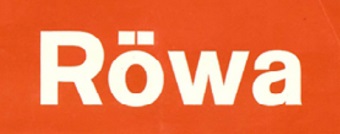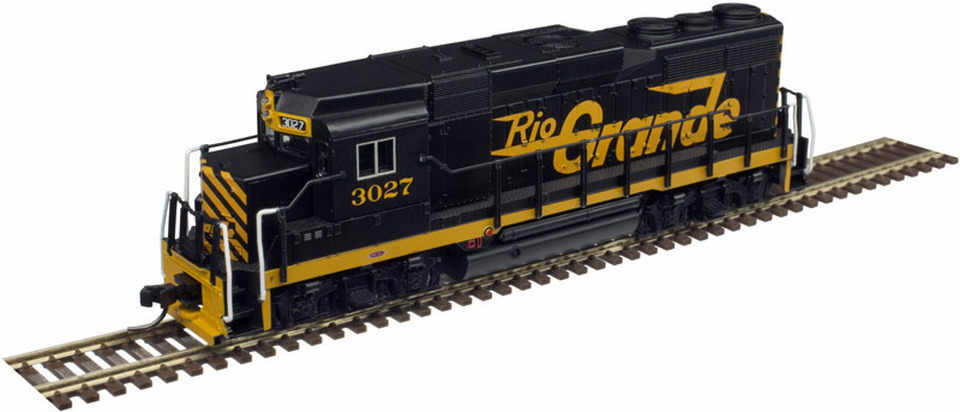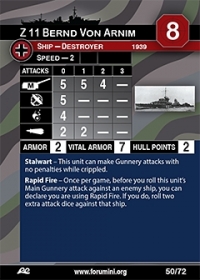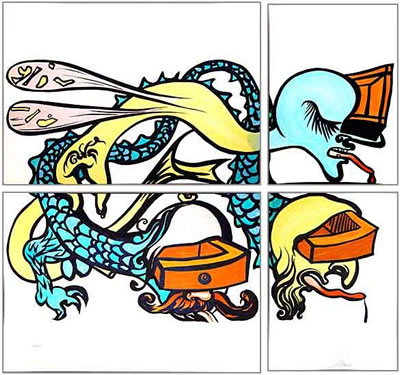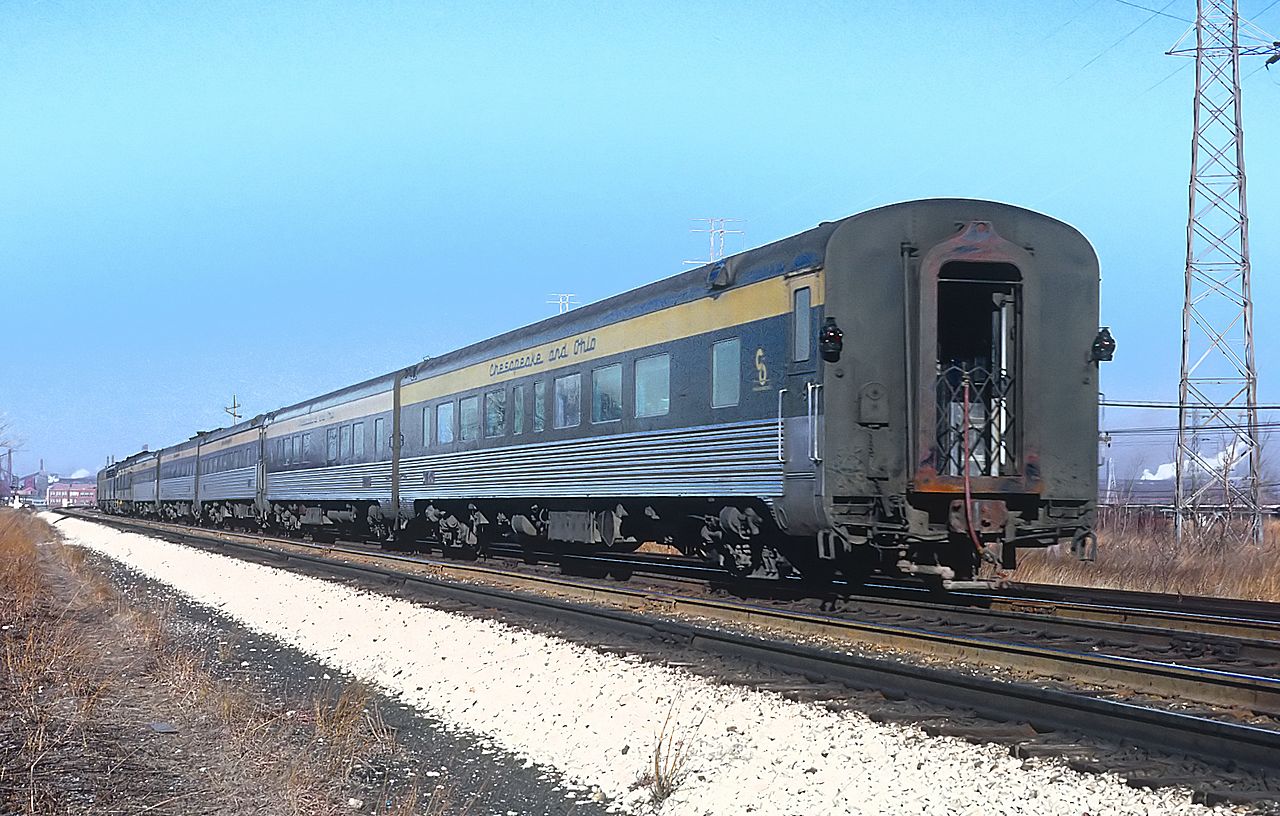Model Information: These cars were originally manufactured for MRC by Röwa (Germany) in the end 1960s-early 1970s. Röwa also sold them under its own brand. Post-MRC, Con-Cor distributed them for a while under its brand name and attempted to acquire the tooling in order to set up production of these cars at Rivarossi. However, said tooling was eventually lost (or confiscated) and these models subsequently vanished from the face of the earth. They have metal window frames, close-coupling, diaphragms and venetian blinds in the windows. Some come equipped with interior lighting.
This model was made after the the Pullman 85’ 5 double bedroom, buffet, 26-seat lounge, blunt end observation car built for the C&O in 1950.
This model was made after the the Pullman 85’ 5 double bedroom, buffet, 26-seat lounge, blunt end observation car built for the C&O in 1950.
Prototype History: The Pullman built cars ordered by Chesapeake & Ohio (C&O) after WWII were semi-corrugated, i.e. corrugated on the lower half, but smooth on the upper half and roof.
Some of these cars ended up on a few other railroads because C&O backed away from their plans for expanding their service putting the excess cars on the market. D&RGW took some of the sleepers and some of the blunt end observation cars ended up on the B&O. Two of the coaches wound up on the SP. But C&O had some or of all of them so that would be the road to decorate them in. Note that the Pere Marquette, Nickel Plate, and other road's semi-corrugated cars look like the C&O cars but actually have more corrugations under the windows and so are not an exact match.
Coach: The car is in two sections divided in the center. Fifty-nine coaches in the 1610-1668 series were delivered to the C&O by Pullman in 1950 for service on most C&O trains, including the George Washington. Eight of these cars were sold to the D&RGW. C&O removed the corrugations in 1967.
Sleeper: This is the Pullman 85' 10-roomette/6-bedroom sleeper built for the C&O in 1950 in the “City of…” series, and 56 were made. Some C&O cars were used on the Pere Marquette. Cars were also sold to ACL, B&O, D&RGW and IC. The Nickel Plate also bought 13 of these 10/6 cars new in 1950 from PS, also named “City of…”.
Observation: This is the Pullman 85’ 5 double bedroom, buffet, 26-seat lounge, blunt end observation car (floor plan 4165) built for the C&O in 1950. Eight cars were built in the “Club” series and used on several trains by the C&O. Some of the C&O cars were modified for mid-train operation. Some were later sold to the B&O, who used them on the Capitol Limited.
Some of these cars ended up on a few other railroads because C&O backed away from their plans for expanding their service putting the excess cars on the market. D&RGW took some of the sleepers and some of the blunt end observation cars ended up on the B&O. Two of the coaches wound up on the SP. But C&O had some or of all of them so that would be the road to decorate them in. Note that the Pere Marquette, Nickel Plate, and other road's semi-corrugated cars look like the C&O cars but actually have more corrugations under the windows and so are not an exact match.
Coach: The car is in two sections divided in the center. Fifty-nine coaches in the 1610-1668 series were delivered to the C&O by Pullman in 1950 for service on most C&O trains, including the George Washington. Eight of these cars were sold to the D&RGW. C&O removed the corrugations in 1967.
Sleeper: This is the Pullman 85' 10-roomette/6-bedroom sleeper built for the C&O in 1950 in the “City of…” series, and 56 were made. Some C&O cars were used on the Pere Marquette. Cars were also sold to ACL, B&O, D&RGW and IC. The Nickel Plate also bought 13 of these 10/6 cars new in 1950 from PS, also named “City of…”.
Observation: This is the Pullman 85’ 5 double bedroom, buffet, 26-seat lounge, blunt end observation car (floor plan 4165) built for the C&O in 1950. Eight cars were built in the “Club” series and used on several trains by the C&O. Some of the C&O cars were modified for mid-train operation. Some were later sold to the B&O, who used them on the Capitol Limited.
Road Name History:  The Chesapeake and Ohio Railway (reporting marks C&O, CO) was a Class I railroad formed in 1869 in Virginia from several smaller Virginia railroads begun in the 19th century. Led by industrialist Collis P. Huntington, it reached from Virginia's capital city of Richmond to the Ohio River by 1873, where the railroad town (and later city) of Huntington, West Virginia was named for him.
The Chesapeake and Ohio Railway (reporting marks C&O, CO) was a Class I railroad formed in 1869 in Virginia from several smaller Virginia railroads begun in the 19th century. Led by industrialist Collis P. Huntington, it reached from Virginia's capital city of Richmond to the Ohio River by 1873, where the railroad town (and later city) of Huntington, West Virginia was named for him.
Tapping the coal reserves of West Virginia, the C&O's Peninsula Extension to new coal piers on the harbor of Hampton Roads resulted in the creation of the new City of Newport News. Coal revenues also led the forging of a rail link to the Midwest, eventually reaching Columbus, Cincinnati and Toledo in Ohio and Chicago, Illinois.
By the early 1960s the C&O was headquartered in Cleveland, Ohio, USA. In 1972, under the leadership of Cyrus Eaton, it became part of the Chessie System, along with the Baltimore and Ohio and Western Maryland Railway. The Chessie System was later combined with the Seaboard Coast Line and Louisville and Nashville, both the primary components of the Family Lines System, to become a key portion of CSX Transportation (CSXT) in the 1980s. A substantial portion of Conrail was added in 1999.
C&O's passenger services ended in 1971 with the formation of Amtrak. Today Amtrak's tri-weekly Cardinal passenger train follows the historic and scenic route of the C&O through the New River Gorge in one of the more rugged sections of the Mountain State. The rails of the former C&O also continue to transport intermodal and freight traffic, as well as West Virginia bituminous coal east to Hampton Roads and west to the Great Lakes as part of CSXT, a Fortune 500 company which was one of seven Class I railroads operating in North America at the beginning of the 21st century.
At the end of 1970 C&O operated 5067 miles of road on 10219 miles of track, not including WM or B&O and its subsidiaries.
Read more on Wikipedia.

Tapping the coal reserves of West Virginia, the C&O's Peninsula Extension to new coal piers on the harbor of Hampton Roads resulted in the creation of the new City of Newport News. Coal revenues also led the forging of a rail link to the Midwest, eventually reaching Columbus, Cincinnati and Toledo in Ohio and Chicago, Illinois.
By the early 1960s the C&O was headquartered in Cleveland, Ohio, USA. In 1972, under the leadership of Cyrus Eaton, it became part of the Chessie System, along with the Baltimore and Ohio and Western Maryland Railway. The Chessie System was later combined with the Seaboard Coast Line and Louisville and Nashville, both the primary components of the Family Lines System, to become a key portion of CSX Transportation (CSXT) in the 1980s. A substantial portion of Conrail was added in 1999.
C&O's passenger services ended in 1971 with the formation of Amtrak. Today Amtrak's tri-weekly Cardinal passenger train follows the historic and scenic route of the C&O through the New River Gorge in one of the more rugged sections of the Mountain State. The rails of the former C&O also continue to transport intermodal and freight traffic, as well as West Virginia bituminous coal east to Hampton Roads and west to the Great Lakes as part of CSXT, a Fortune 500 company which was one of seven Class I railroads operating in North America at the beginning of the 21st century.
At the end of 1970 C&O operated 5067 miles of road on 10219 miles of track, not including WM or B&O and its subsidiaries.
Read more on Wikipedia.
Brand/Importer Information: In the hobby industry, few companies have built as bold and dynamic a reputation for quality products and technical achievement as Model Rectifier Corporation (MRC). More than a half century ago, MRC began its march toward hobby product leadership by designing model railroad train controls with a level of realism and power previously unavailable. Today, MRC's technology-rich Tech 6 and Prodigy DCC lead a long list of MRC engineered train controls and sound systems respected and enjoyed by millions of model railroad hobbyist around the world.
Success with model railroads led us to carry our passion for hobby quality and technology into the development of other outstanding brands and categories. Today, MRC is the exclusive distributor for some of the world's most respected hobby products as well as the creators and manufacturers of prominent proprietary lines. While our brands and products are diverse, they all share a common bond. Each product we sell meets stringent quality standards and exceeds the highest customer expectation levels. Extraordinary in its depth and breadth, MRC product lines include some of the world's most recognized hobby brands and category leaders.
Success with model railroads led us to carry our passion for hobby quality and technology into the development of other outstanding brands and categories. Today, MRC is the exclusive distributor for some of the world's most respected hobby products as well as the creators and manufacturers of prominent proprietary lines. While our brands and products are diverse, they all share a common bond. Each product we sell meets stringent quality standards and exceeds the highest customer expectation levels. Extraordinary in its depth and breadth, MRC product lines include some of the world's most recognized hobby brands and category leaders.
Manufacturer Information: Röwa was founded in 1961 by Willy Ade and Horst Röchling, the company name being an acronym of their combined names. For several years, much of Röwa’s energies were directed toward developing products for other model train manufacturers, notably Trix of Germany and, on occasion, Roco of Austria.
Production of model trains under the Röwa name began in the late 1960’s, ca. 1968. Much of the company’s products were in H0-Scale, but there was some interesting production in N-Scale.
The Röwa American-prototype N-Scale items were marketed in the United States by Model Rectifier Corporation (MRC) for a period of a few years. Both the locomotives and passenger cars were subsequently marketed by other companies in successive years. For example, Brawa and Con-Cor marketed the N&W Y-6b Mallet-type, and the Berkshire may have also been marketed in the same way. Con-Cor owned the passenger car tooling for a period of time, producing until the die-molds went out of production tolerances.
Röwa ended production around 1974 and the manufacturing tools and dies used to produce the trains were sold to other companies.
From this website.
Production of model trains under the Röwa name began in the late 1960’s, ca. 1968. Much of the company’s products were in H0-Scale, but there was some interesting production in N-Scale.
The Röwa American-prototype N-Scale items were marketed in the United States by Model Rectifier Corporation (MRC) for a period of a few years. Both the locomotives and passenger cars were subsequently marketed by other companies in successive years. For example, Brawa and Con-Cor marketed the N&W Y-6b Mallet-type, and the Berkshire may have also been marketed in the same way. Con-Cor owned the passenger car tooling for a period of time, producing until the die-molds went out of production tolerances.
Röwa ended production around 1974 and the manufacturing tools and dies used to produce the trains were sold to other companies.
From this website.
Item created by: Alain LM on 2020-11-01 11:22:14
Last edited by: Alain LM on 2020-11-01 11:23:08
If you see errors or missing data in this entry, please feel free to log in and edit it. Anyone with a Gmail account can log in instantly.
Last edited by: Alain LM on 2020-11-01 11:23:08
If you see errors or missing data in this entry, please feel free to log in and edit it. Anyone with a Gmail account can log in instantly.




